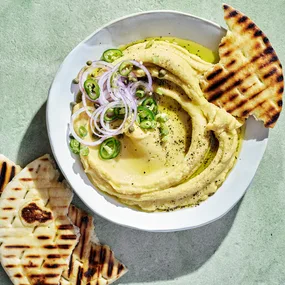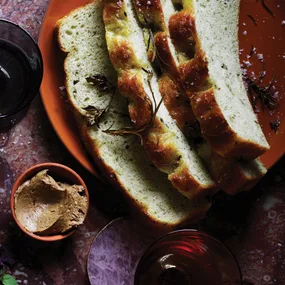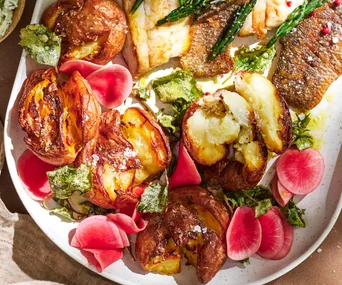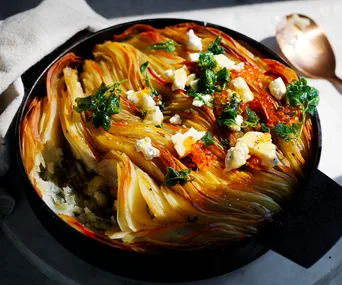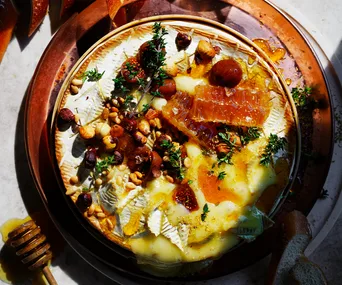In classic Mediterranean fashion, sweetness and sourness – “agrodolce” in Italian – run all the way through this beautiful summery dish: little nuggets of grapy sweetness plumped up and sharpened in vinegar; sour breadcrumbs; the mouth-coating depth of parmesan cut through with a fresh squeeze of lemon. My instinctive match for sardines is a bone-dry southern Italian varietal white wine such as a vermentino, because its naturally high acidity is perfect for cutting through the meaty oiliness of the fish. But because of all that agrodolce action I’m going to go with pinot grigio instead: even when it’s made into a crisp, dry style, good grigio has a heart of sweet grapy fruitiness that will match this dish wonderfully well. After a few years of being seen as an alternative grape in Australia, pinot grigio is now part of our vinous mainstream: it is, believe it or not, the country’s fourth or fifth most widely planted white wine grape. Confusingly, winemakers can use either of the grape’s synonyms – the French “gris” or Italian “grigio” – on the label, but alcohol content is usually a good guide to style: if it’s less than 13 per cent (as all the wines here are), it’s likely to be in the lighter, crisper, fish-friendly Italian grigio style.
Not normally Max Allen’s first choice with sardines, pinot grigio is his pick when the fish are served agrodolce-style.
Ingredients
Method
Main
Note This dish is named after the beccafico, a species of warbler. (Its name translates loosely as “bird that pecks at figs”.) Sicilians once hunted and cooked the birds and served them with their tail feathers intact for ease of grasping and eating. The sardines, rolled up with their tails sticking out, resemble those little birds. Drink suggestion by Max Allen
Notes





